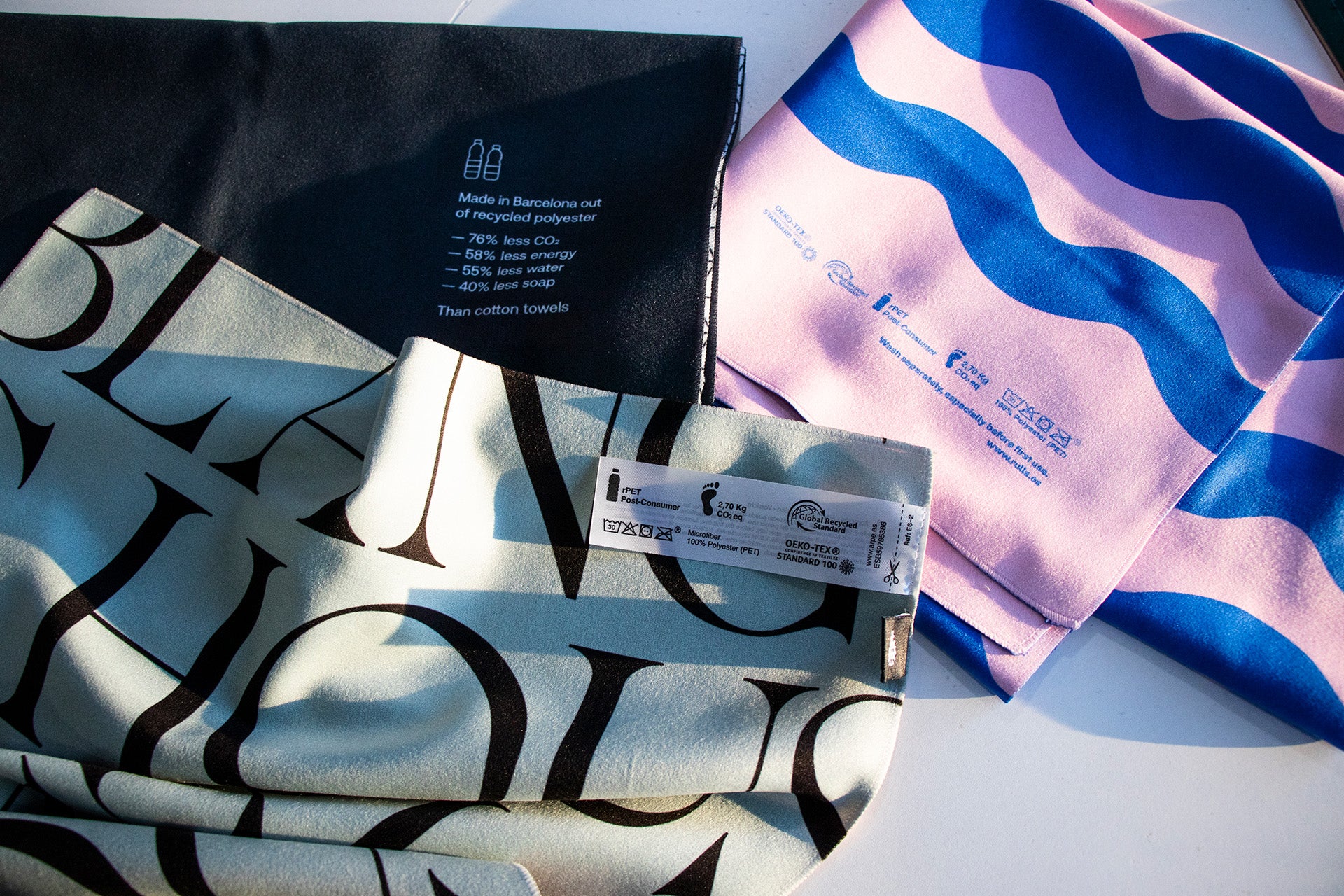
How to recycle microfiber towels and give them a second life?
Every year, the textile industry generates tons of waste that end up incinerated or in landfills, having a high environmental impact. Therefore, recycling textiles is essential to reduce waste and promote a circular economy. And did you know that not all textiles are recycled in the same way? As a textile industry, we know that we have great responsibility and commitment in this area, and we want to explain how to recycle our microfiber towels easily and correctly.
The first step to being able to recycle them is to know what they are made of. Our microfiber towels, made from a minimum of 29% recycled polyester, have an important advantage: they are monomaterial (100% polyester), which means you can recycle them very easily without the need to separate any parts.
Now, how can we recycle microfiber towels?
-
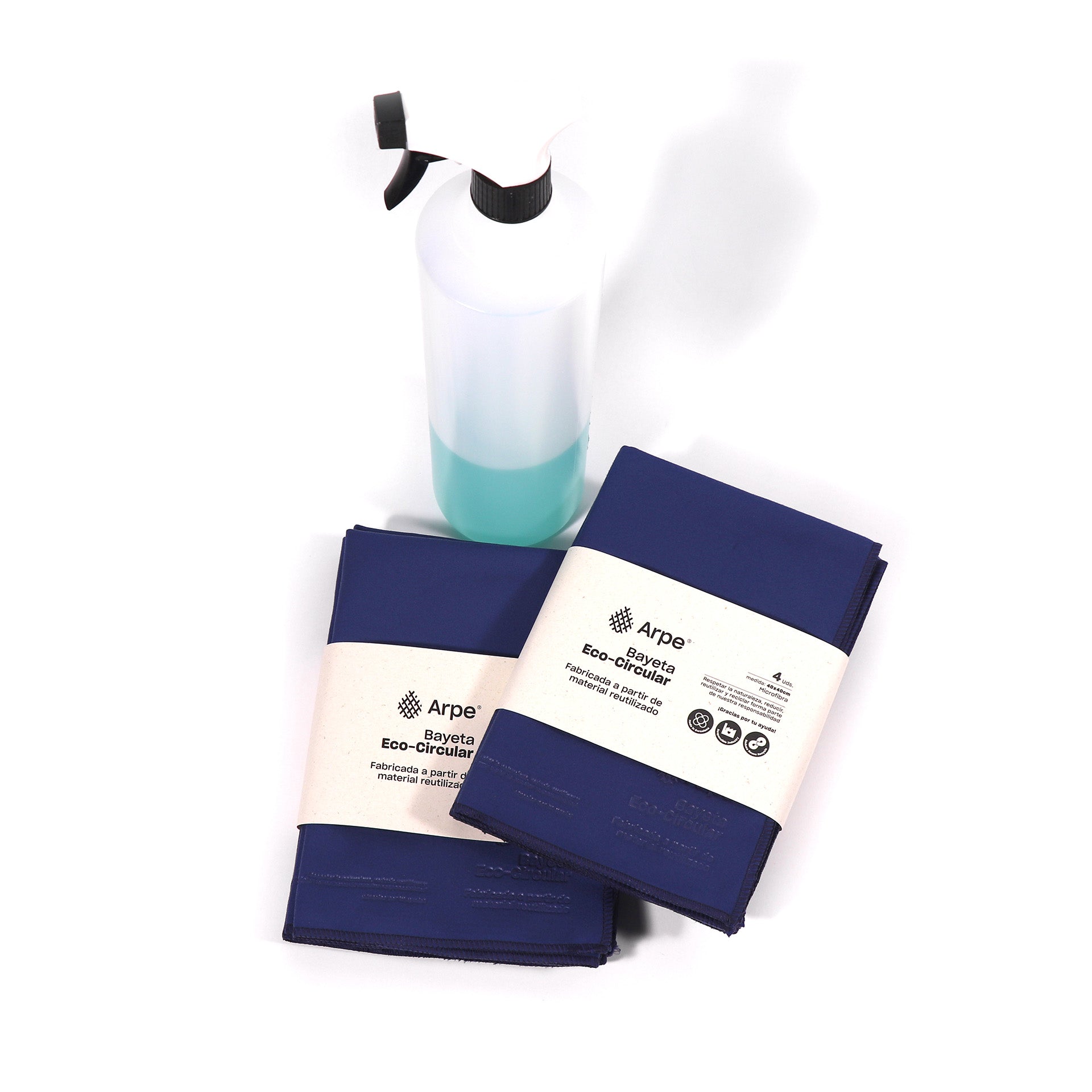
Reconvert them with creativity (upcycling)
If the towel is still useful, the best option is to give it a second life and turn it into cleaning cloths, pet mats, or even cushions and rugs. A homemade option that helps extend the material's life.
-
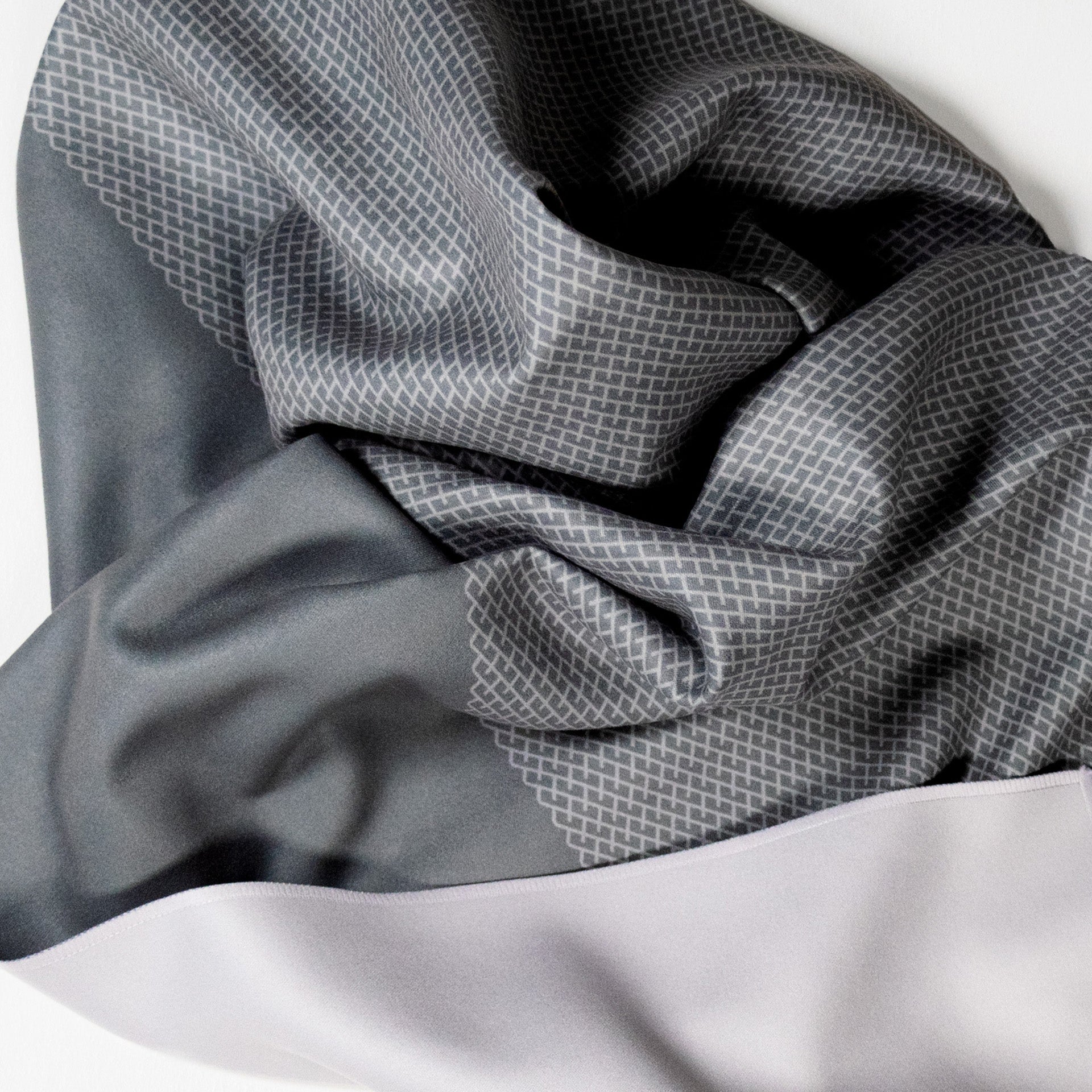
Taking them to textile collection points
Towels can be dropped off at green centers, eco-parks, or establishments that offer textile collection programs. Here, they can be recycled in different ways:
Mechanical recycling: Towels are sorted, shredded, and transformed into short fibers, which can be reused to make new fabrics or materials, such as fillings and insulation. Although the fiber may lose quality with each cycle, it is still a sustainable option. -
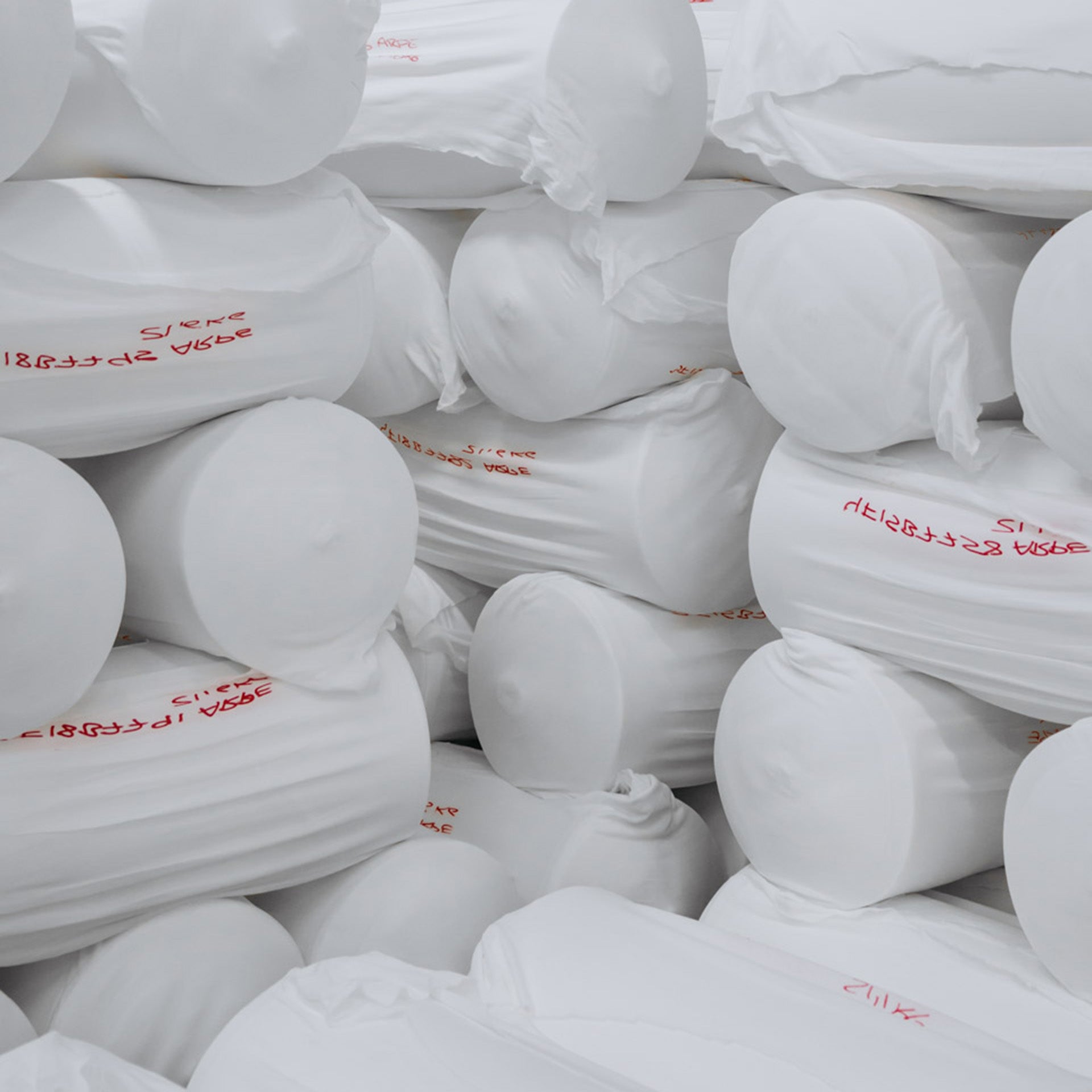
Taking them to textile recycling plants
Some specialized plants can handle synthetic textiles and apply the following processes:
Chemical recycling: This method allows the fibers to be broken down to recover their basic components and polymerized again, obtaining high-quality recycled polyester without fiber degradation.
Energy recycling: When textile waste cannot be reused or recycled, it can be burned to generate energy. To do this, it must be taken to specialized textile waste energy recovery plants, which transform the waste into energy through controlled combustion processes. Although this option prevents the accumulation of waste, it does not allow the reuse of materials.
Every action counts. If you have an old towel, give it a second life! And if you need a new one, choose sustainable options like ours:
At Arpe, we calculate the life cycle of our products to get a comprehensive and detailed view of their impact. Thus, according to the carbon footprint of our microfiber towel, the usage phase (washing) is the one with the greatest environmental impact. That's why we use long-lasting high-quality materials (more than 150 washes, as indicated by the LCA) that consume less water, energy, and soap when washing.
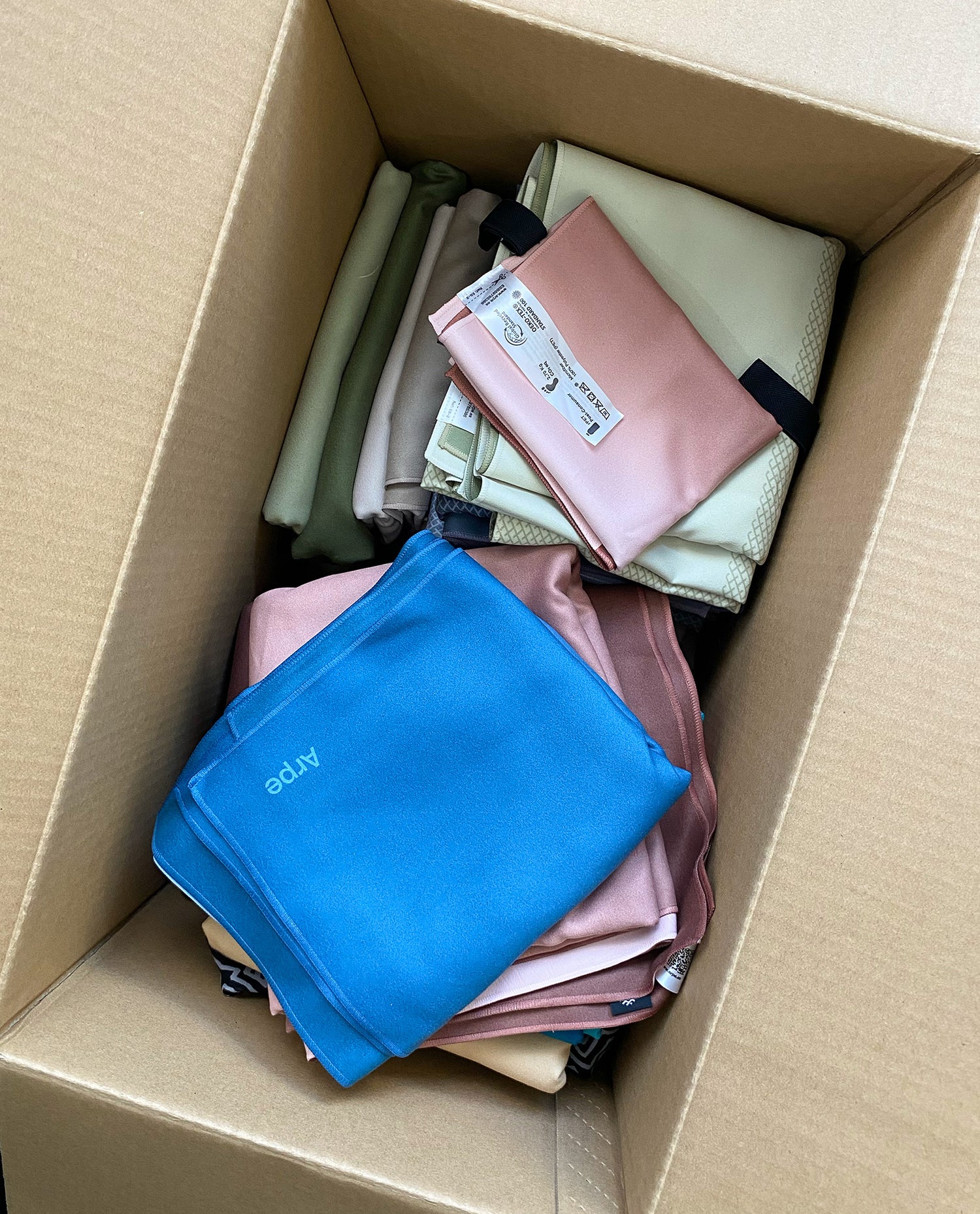
In conclusion, how can we reuse microfiber towels at the end of their useful life?
✅ If they are in good condition: donate them to an NGO, sports centers or animal shelters.
✅ If they are very worn: take them to a textile container or a green point so they can be recycled.
✅ If you want to do it yourself: turn them into cleaning cloths to prolong their life.
What mistakes should we avoid?
❌ Do not throw them away in the waste container (they will end up in a landfill or incinerated).
❌ Do not throw them away in paper or plastic containers (they are not recycled properly).
Our blog...
View all-

How a Family Idea Revolutionized the World of P...
The origins: from knitting underwear to creating technical fabrics The story of Arpe begins with more than eight decades of experience in the textile industry. Montse and Joan’s grandparents founded...
How a Family Idea Revolutionized the World of P...
The origins: from knitting underwear to creating technical fabrics The story of Arpe begins with more than eight decades of experience in the textile industry. Montse and Joan’s grandparents founded...






